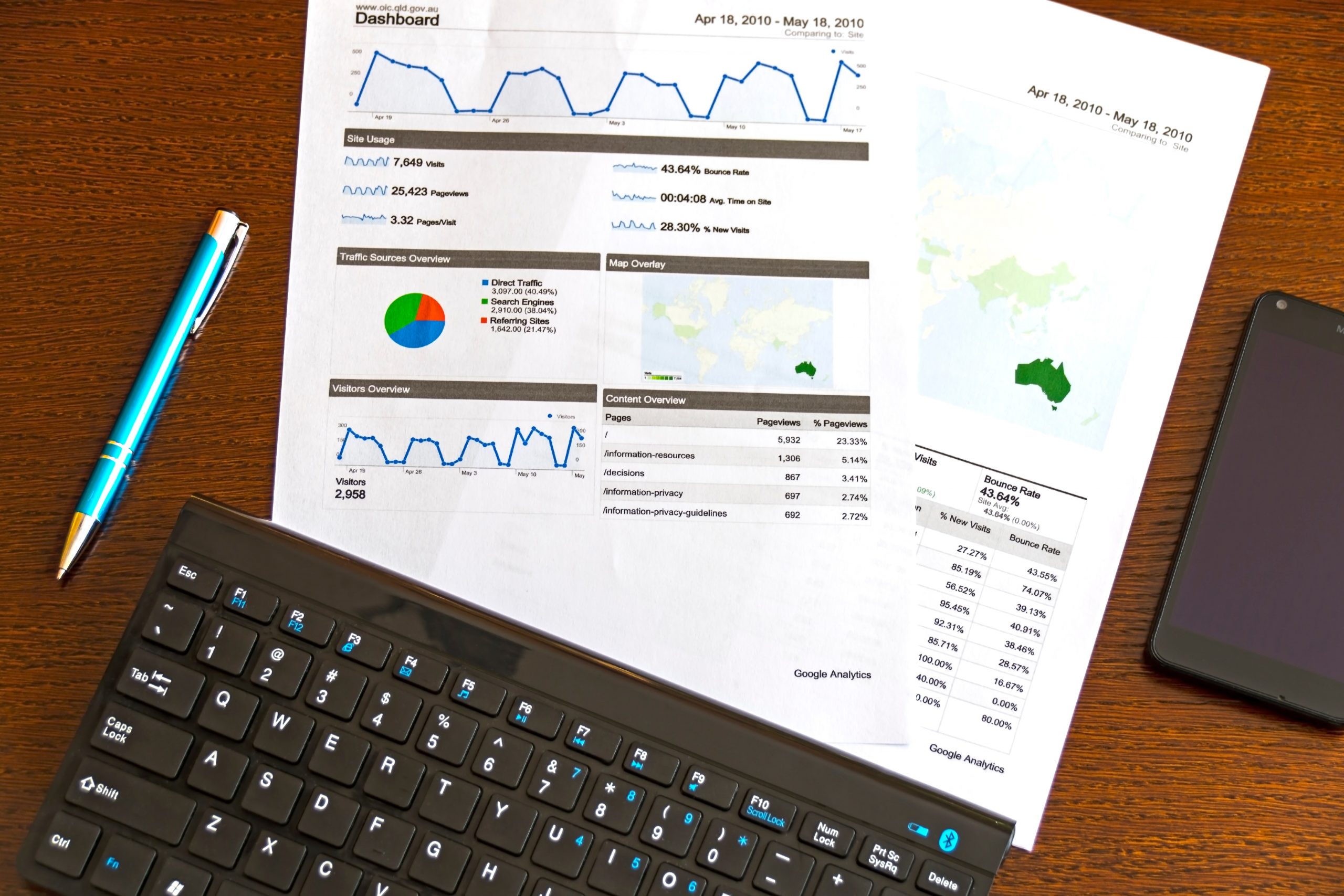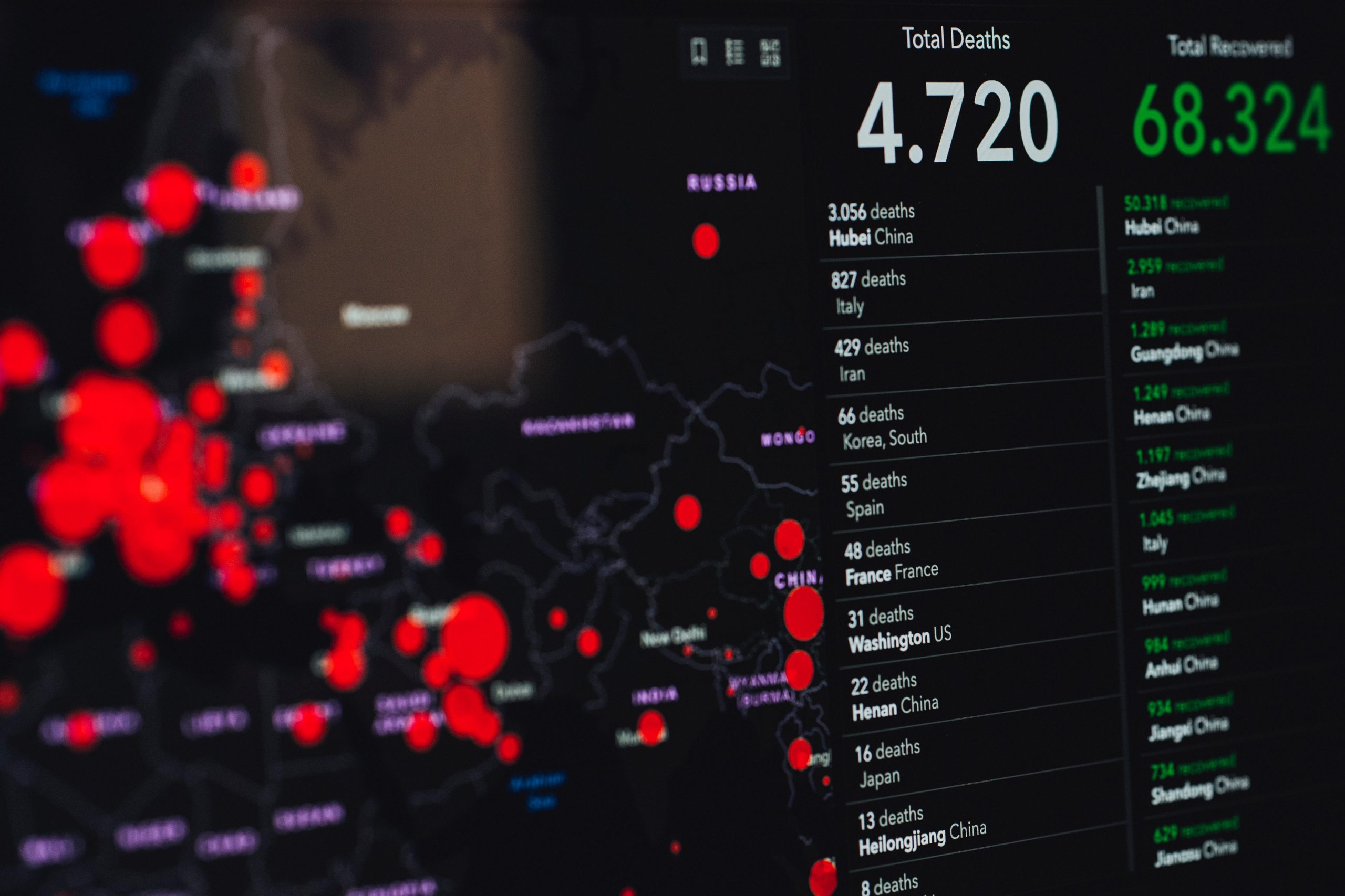Introduction
From Google, Microsoft, and Facebook to Swiggy, Zomato, and Byju’s, everybody wants to get on just one bandwagon – Data Science and Machine Learning. The global machine learning market is expected to reach $20.83 Billion by the year 2024. That’s massive! According to Glassdoor, the average pay scale of a data scientist is Rs. 900k per year in India, whereas the average salary of a computer programmer is Rs. 400k per year. That is the kind of scale we are talking about. Are you also thinking of pivoting to a data science career? Read on to learn about the 14 must-have data scientist skills that will boost the process.
Table of Contents
The 14 Must-Have Skills Needed for Data Scientist
The job of a data scientist involves collecting, structuring, analyzing, and gaining inferences from large amounts of data. Therefore, a data scientist must possess a range of diverse skills ranging from data handling and programming expertise to analytical thinking and communication. Here is a comprehensive list of the 14 most important technical and soft skills needed to be a data scientist.
- Fundamentals of Data Science
- Statistics
- Programming knowledge
- Data Manipulation and Analysis
- Data Visualization
- Machine Learning
- Deep Learning
- Big Data
- Software Engineering
- Model Deployment
- Communication Skills
- Storytelling Skills
- Structured Thinking
- Curiosity
Technical Skills for Data Scientists
Technical data scientist skills are of paramount importance in today’s data-driven world. As organizations increasingly rely on data to make informed decisions and gain a competitive edge, data scientists play a critical role in extracting valuable insights from complex datasets. Here are the key reasons why technical data scientist skills are essential:
Fundamentals of Data Science

As a newcomer in data science, I did what everyone around me did – started applying machine learning techniques like linear regression and SVM without even understanding the basics. I believe it’s all a fault of the generic “Build your machine learning model in 5 Lines of code” but this is miles away from reality.
The first and foremost important skill needed for data science is to understand the fundamentals of data science, machine learning, and artificial intelligence as a whole. Understand topics like –
- Difference between machine learning and deep learning
- Difference between data science, business analytics, and data engineering
- Common tools and terminologies
- What is supervised and Unsupervised Learning
- Classification vs regression problems
Want to get answers to all these questions? The best resource to clear your doubts is this free course –
Statistics and Probability

Statistics is the grammar of data science.
When you start learning to write sentences, you must be familiar with grammar to build the right sentences similarly statistics is an essential concept before you can produce high-quality models. Machine Learning starts out as statistics and then advances. Even the concept of linear regression is an age-old statistical analysis concept. 🙂
The knowledge of the concept of descriptive statistics like mean, median, mode, variance, the standard deviation is a must. Then come the various probability distributions, sample and population, CLT, skewness and kurtosis, inferential statistics – hypothesis testing, confidence intervals, and so on.
Statistics is a MUST concept to become a data scientist. You can deep dive into some of these concepts with these clear articles and their examples –
- Statistics for Data Science: What is Normal Distribution?
- Statistics for Analytics and Data Science: Hypothesis Testing and Z-Test vs. T-Test –
- Statistics for Data Science: What is Skewness and Why is it Important?
Programming Knowledge

Machine Learning has seen a great jump only because of the boost in computing power. Programming provides us a way to communicate with machines. Do you need to become the best in programming? Not at all. But you will definitely need to be comfortable with it.
First of all, choose the programming language of your choice. Python, R, or Julia are to name a few and each has its own set of Pros and Cons. Python is a general-purpose programming language having multiple data science libraries along with rapid prototyping whereas R is a language for statistical analysis and visualization. Julia offers the best of both worlds and is faster. If you are confused about which language to choose, I have compiled a resourceful article for you – 5 Popular Data Science Languages – Which One Should you Choose for your Career?
Honestly, I have found Python to be a lot easier to perform machine learning tasks, due to the availability of libraries and high support for deep learning. If you want to go for Python, here is a great free course to refer to Python for Data Science.
Data Manipulation and Analysis

Do you know what separates a great machine learning project from the rest? Data Wrangling and Analysis. Although these are two different steps, I have included them simultaneously because of the sequence.
Data manipulation or wrangling is the step in which you clean the data and transform it into a format that can be analyzed better in the next stages. Let’s take the example of packing your luggage. What will happen if you throw all your clothes into your bag? You will save a few minutes, but it’s not an efficient way to do it, and your clothes will also get spoiled. Instead, you can spend a few minutes ironing and putting them in stacks. It will be much more efficient, and your clothes will remain in good condition.
Similarly, data manipulation and wrangling take up a lot of time but ultimately help you in making better data-driven decisions. Some of the data manipulation and wrangling generally applied are – missing value imputation, outlier treatment, correcting data types, scaling, and transformation.
Data Analysis is the step where you understand all about the data and take its “feel.” This is usually the step where you learn a lot about the data. For example, what are the average sales per week, Which products are bought the most, and so on.
Data Analysis is typically done in Excel, SQL, and Python and is the most important task of an analytics professional, whereas, in machine learning, data analysis is a step in the whole process. Here is a list of free courses to checkout:
- Microsoft Excel: Formulas & Functions
- Pandas for Data Analysis in Python
- 8 SQL Techniques to Perform Data Analysis for Analytics and Data Science
Data Visualization

To be honest, this is one of the most fun parts of machine learning, Data Visualization is more like an art than a hard-wired step. There is no “One size fits all” approach here. A Data Visualization expert knows how to build a story out of the visualizations.
To start with you must be familiar with plots like Histogram, Bar charts, pie charts, and then move on to advanced charts like waterfall charts, thermometer charts, etc. These plots come in very handy during the stage of exploratory data analysis. The univariate and bivariate analyses become much easier to understand using colorful charts.
If you are wondering which tools you use during this step then don’t worry. Every language discussed above offers a great set of libraries for advanced charts. If you want to take a step ahead and impress your seniors then Tableau is the way to go. It offers a smooth interface with drag-and-drop functionality. I’d recommend you to go through these resources to become an expert at data visualization –
- Tableau for Beginners
- 8 Data Visualization Tips to Improve Data Stories
- 3 Ambitious Excel Charts to Boost your Analytics and Visualization Portfolio
Machine Learning

Finally! The skills that give inner satisfaction!
For a data scientist, machine learning is the core skill to have. Machine learning is used to build predictive models. For example, you want to predict the number of customers you will have in the next month by looking at the past month’s data, you will need to use machine learning algorithms.
You can start with a simple linear and logistic regression model and then move ahead to advanced ensemble models like Random Forest, XGBoost, CatBoost, and so on. It’s a good thing to know the code for these algorithms (which just takes 2-3 lines) but what’s most important is to know how they work. This will help you in hyperparameter tuning and ultimately a model that gives a low error rate. Here are some free courses to get you hooked –
- Fundamentals of Regression Analysis
- Ensemble Learning and Ensemble Learning Techniques
- Getting Started with scikit-learn (sklearn) for Machine Learning
The best way to learn machine learning is by practicing problem statements. Analytics Vidhya offers a variety of practice problems that you can work on at any time. You can also attend HackLive – a guided community hackathon and learn from experts as they solve problems right in front of you and make your contribution by participating in the hackathon. You can learn more here –
Deep Learning

Are you motivated by smart assistants, the cool self-driven car segment, or the funny videos created using deepfakes? All has been possible due to Deep Learning. It is a high-growth vertical in the field of Artificial Intelligence thanks to advancements in data storage capabilities and computational advancement.
To excel in this field, you must be well-versed in programming (preferably with Python) and have a good grip on linear algebra and mathematics. To start off, you can start building basic models and then jump to advanced models like CNN, RNN, and more.
Libraries like TensorFlow, Keras, and PyTorch are a must if you want to build your career in deep learning. You can check out these resources to start your career –
- A Comprehensive Learning Path for Deep Learning in 2023
- Getting Started with Neural Networks
- Convolutional Neural Networks (CNN) from Scratch
Big Data

We are generating data at a rate of 2.5 Quintillions per day! Due to the rise of the internet, social media networks, IoT there has been a sudden boom in the rate of data we are generating. This data is high in volume, velocity, and veracity which form the 3V’s of Big Data.
Organizations have been overwhelmed with such a large amount of data and they are trying to tackle this data by rapidly adopting Big Data Technology so that this data can be stored properly and efficiently and used when needed.
Hadoop, Spark, Apache Storm, and Flink, Hive are some of the Frameworks/ Tools you must master.
- 5 Popular NoSQL Databases Every Data Science Professional Should Know About
- Hadoop Distributed File System (HDFS) Architecture – A Guide to HDFS for Every Data Engineer
- Types of Tables in Apache Hive – A Quick Overview
Software Engineering

To write a high and good quality code that won’t cause havoc during the production stage, it is necessary to know the basics of some of the software engineering subjects like – the basic lifecycle of software development projects, data types, compilers, time-space complexity, etc.
Writing efficient and clean code will help you in the long run and help you collaborate with your team members. Again, you don’t need to be a software engineer but being clear with the basics will help you.
- Basic Concepts of Object-Oriented Programming in Python
- Inheritance in Object Oriented Programming for Python – An In-Depth Guide for Everyone
- Methods in Python – A Key Concept of Object Oriented Programming
Model Deployment

Model Deployment is the most underrated step in the machine learning lifecycle. I’ll quote about model deployment from my previous article –
Let us take an example here. An insurance company has initiated a data science project that uses Vehicle images from accidents to assess the extent of the damage. The data science team works day and night to develop a model that has a near-perfect F1 score. After months of hard work, they have the model ready and the stakeholders love its performance, but what after that?
Remember that the end-users, in this case, are the insurance agents, and this model needs to be used by multiple people at the same time who are NOT data scientists. Therefore, they’ll not be running a Jupyter or Colab notebook on GPUs. This is where you need a complete process of model deployment.
This task is usually done by machine learning engineers, but it varies according to the organization you are working in. Even if it is not the job requirement of your company, it is very important to know the basics of model deployment and why it is necessary.
- How to Deploy Machine Learning Models using Flask (with Code!)
- Deploy an Image Classification Model Using Flask
- TensorFlow Serving: Deploying Deep Learning Models Just Got Easier!
Soft Skills for Data Scientists
Soft skills are equally important as technical skills for data scientists. While technical expertise allows data scientists to handle data and perform analyses, soft skills enable them to effectively communicate their findings, collaborate with others, and make a meaningful impact on the organization. Here are the key reasons why soft skills are crucial for data scientists:
Communication Skills

“Good communication is just as stimulating as black coffee, and just as hard to sleep after.”
– Anne Morrow Lindbergh
Data Science projects are more of a treasure-hunting job, the treasure being the insights you fetch from the data. The question is, what is the price of the treasure? Well, that is decided by your stakeholders. The only way to get a good price is to be able to communicate how insightful the results are and how this treasure can help them improve the profits and organization.
Furthermore, the quality of a great data scientist is to formulate the problem statement. At the start of the project, the stakeholders tell their requirements to the data scientist, and then the latter formulates a problem statement. For example, the stakeholder needs to improve the content recommendation of their OTT platform so that the retention time increases. This is a very vague description. It’s the job of the data scientist to communicate the right problem statement.
Storytelling Skills

Imagine watching a cricket match stats. You are shown with the runs scored on each bowl in the form of a table. Do you think you will get any important information from this? What if you are you are shown a bar chart of runs scored in each over? Seems better. Right? It is not in human nature to understand blocks unless you make them interactive.
Storytelling is the most important skill acquired by a data scientist. Do you want to understand Coronavirus through data? Here’s a great example of storytelling skills –
Information is Beautiful: Coronavirus Infographic
Structured Thinking

Let us say that you want to become a data scientist – you will break this large goal into multiple parts like training, preparing your resume, applying for a job, etc. The ability to break down a problem into multiple parts so as to efficiently solve it is structured thinking.
A Data Scientist always looks at problems from different perspectives. This is an acquired skill, but you can definitely work on it. Kunal Jain, Founder and CEO of Analytics Vidhya, has created a great course on it. You can check it out here –
Curiosity

Why did this happen? How did this happen? If I tweak this, will it affect the overall results? Continuously asking questions is one of the most crucial soft skills of a data scientist. If you are dull, you may follow all the steps of the machine learning project lifecycle, but you won’t be able to reach the end goal and justify your result.
Data Science is still evolving, and let me tell you the most important thing – Learning never stops in this field. You master the tool one day, and it gets run over by an advanced tool the next day. A data scientist needs to be curious and always learning.
Conclusion
It is exciting to be a data scientist in this decade. A lot of advancements await in the future. In this article, we discussed the 14 most important skills (hard and soft) needed to become a successful data scientist. Do you have any other skills that you wish were on this list to become a data scientist? Let me know in the comments!
Frequently Asked Questions
A. The top three skills for a data scientist are strong programming knowledge (Python, R, etc.), expertise in machine learning, statistics, data analysis, and data visualization (using tools like Tableau or Power BI), and domain knowledge to understand and solve real-world problems effectively.
A. To be a data scientist, you need proficiency in programming languages (Python, R, etc.), statistics and data analysis techniques, and the ability to communicate complex findings to non-technical stakeholders.
A. Yes, coding is a fundamental skill required in data science. Data scientists use programming languages like Python or R to manipulate, analyze, and extract insights from data and build and deploy machine learning models.
Yes, Freshers can become data scientists by developing the necessary skills and experience, networking with other data scientists, and being proactive and persistent.
Yes, Data scientist is a demanding job that requires strong technical, communication, problem-solving, and pressure-handling skills.




